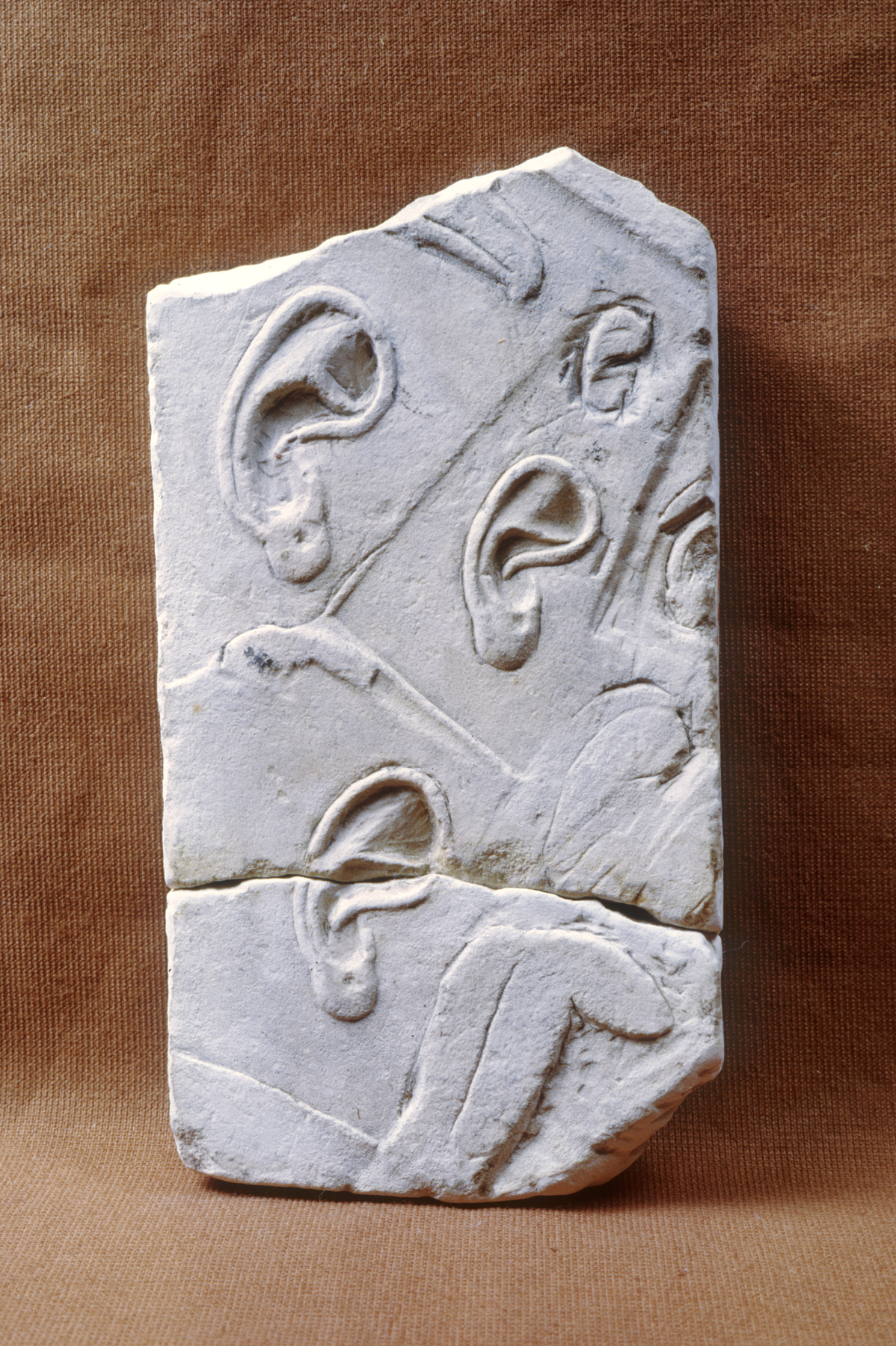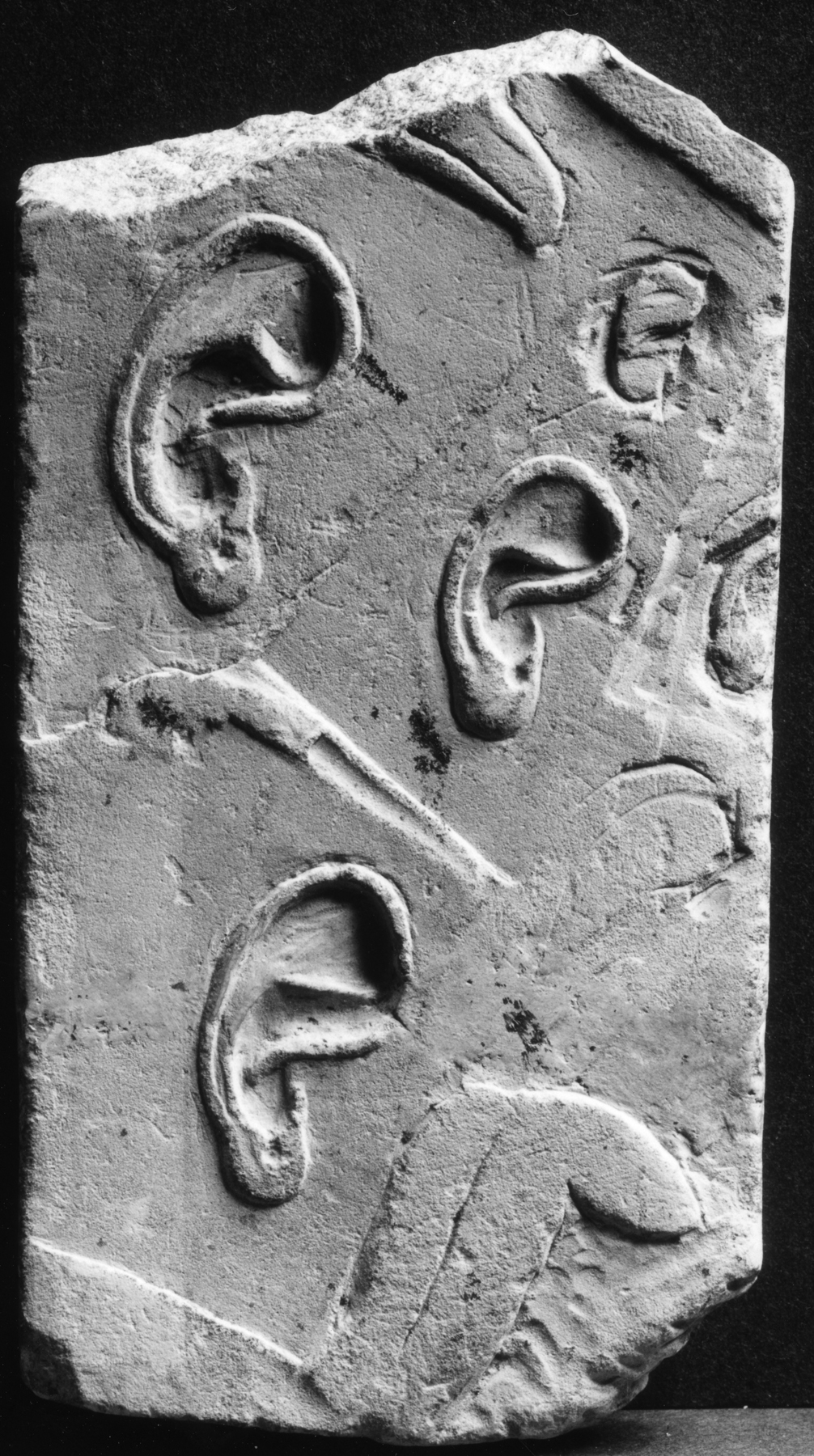Sculptor's Model: King with "Blue Crown"
(Ancient Egypt and Nubia )
Sculptor's models were popular teaching aids among Ptolemaic workshops. Displayed on one side of this limestone plaque, in raised relief, is a kneeling king holding a wine jar in his hands. This carefully executed figure most likely served as a model for students. The plaque was cut from a larger piece which also originally served for training purposes. Three finished and two unfinished ears have been preserved, as well as a part of another ear, cut in half when the plaque was made smaller. Above the ears the beak of a vulture has also been preserved.
Provenance
Provenance (from the French provenir, 'to come from/forth') is the chronology of the ownership, custody, or location of a historical object. Learn more about provenance at the Walters.
Dikran Kelekian, New York and Paris, [date and mode of acquisition unknown]; Henry Walters, Baltimore, 1914, by purchase; Walters Art Museum, 1931, by bequest.
Exhibitions
| 2003-2004 | Tools and Models: The Art of the Sculptor in Ancient Egypt. The Walters Art Museum, Baltimore. |
Conservation
| Date | Description | Narrative |
|---|---|---|
| 7/24/1972 | Treatment | stabilized; cleaned |
| 9/6/1972 | Treatment | cleaned; loss compensation |
| 9/6/1972 | Treatment | cleaned; stabilized; coated |
| 1/10/1992 | Examination | condition |
| 9/18/1998 | Examination | survey |
Geographies
Egypt (Place of Origin)
Measurements
4 9/16 x 2 7/16 x 9/16 in. (11.6 x 6.2 x 1.4 cm)
Credit Line
Acquired by Henry Walters, 1914
Location in Museum
Accession Number
In libraries, galleries, museums, and archives, an accession number is a unique identifier assigned to each object in the collection.
In libraries, galleries, museums, and archives, an accession number is a unique identifier assigned to each object in the collection.
22.285




